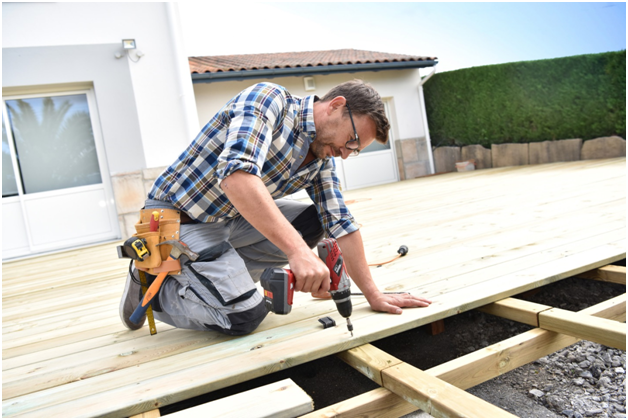One of the best ways a homeowner can improve their backyard area and day-to-day living experience is by building a deck. A deck can revitalize the outdoor space and provide new ways to enjoy your home and spend time with your family.
The process can be very rewarding, but also requires a good bit of planning. You’ll also need to consider several things.
The best decks match the home in a way that makes the whole property look better. They are built with a design and materials that suit the weather conditions of the area.
If you are thinking about building a deck, read on and we’ll walk you through seven things you should consider before getting started.
1. Remember to Budget
The best way to start a large project like building a deck is to set a realistic budget to guide your decisions. This will help you make many of the decisions related to the size, design, and materials you select.
It can be difficult to get an idea of the different costs, so if you are not sure where to start, you can consult a local contractor.
Talking with people at your local home improvement stores can help you get some recommendations and give you some ideas for your deck as well.
2. Check Your Local Laws and Regulations
Another important consideration to make before getting into the deck building process is to check your local regulations and permit requirements.
Each community has its own building codes and regulations, but building a deck any larger than 10ft x 10ft will almost always require a permit and inspection.
In addition, many neighborhoods or HOA’s may have their own restrictions.
Checking your neighborhood, HOA, and local requirements before starting the project will help you avoid costly fines, neighborhood disputes, or worse. If you are uncertain about this process, you may want to consult a professional to ensure your deck is safe and meets all requirements.
3. Building a Deck with Purpose in Mind
A good thing to keep in mind when designing your deck is how you want to use it. The purpose you envision for your deck will guide you in deciding on the size, layout, and features you want.
Do you just want a sunny outdoor space for deck chairs and tables? Or do you want a lounging area, hot tub, or firepit? Some decks have full outdoor kitchens, and others have covered TV spaces.
A good way to start is to make a list of the features you want.
4. Find the Right Fit
Once you have an idea of how you want to use your deck, you can choose the best location for it. If you want it primarily as a sundeck, you will want to fit it on the side of your house with the most direct sunlight.
Some choose to build it on the side with the best view of the sunset, or sunrise.
You may want to position the deck with sliding glass door access, or alongside existing features of your home. The landscape elevation and shape of your yard will also likely play a role in fitting your deck to your home.
If you’re curious about door installation, view here to learn more about options that might be available to you.
5. Optimize for Your Climate
Your local environmental conditions should be taken into consideration if you want to be able to safely and pleasantly enjoy your deck as much as possible.
If you live in an excessively sunny area, you will probably want to build-in covered or shaded sections. If you live in an especially snowy or rainy region, you may want another kind of cover, and perhaps more railing and slip-resistant materials.
Thinking about your local climate will also help you decide on the right building materials, which will be covered more in the next section. The better you build your deck for use in a variety of weather conditions, the more you and your family will likely use it.
6. Pick the Right Deck Materials
Most decks are traditionally made of wood, but the type of wood you choose is very important for the look and longevity of your deck. Some factors to consider when choosing your wood are resistance to rot, resistance to insects, and aging properties.
Redwood is naturally rot-resistant and very stable, so it resists warping. However, it must be coated and maintained with a sealer over time and can turn gray with time and rain exposure.
Cedar, on the other hand, is a relatively soft wood that is naturally resistant to insects and rot. If you’re wondering, “do cedar deck boards need to be treated,” it’s worth noting that being softer, cedar can bend and splinter and may not be right for all decks.
There are many other wood options out there to consider, but these two are the most popular.
7. Choose to DIY or Hire the Right Team
One of the biggest decisions is whether to do-it-yourself or hire professionals to handle the deck building process.
It is a good idea to get a quote to begin with, and if the cost of labor is too high for you, you may want to DIY. If you are handy, there is certainly a sense of satisfaction and excitement that goes along with building your own deck.
However, a professional can provide a lot of design experience and relieve a lot of stress, as well as ensure that your deck adheres to regulations and requirements.
Factors to Consider When Building a Deck
When building a deck, it is important to plan and design your deck with purpose. Your budget and intended usage of your deck will guide your decisions on location, materials, and whether you hire professionals or DIY.
Need more tips for around the house? Keep scrolling our blog for more.


